Gem Profile- Cowrie Shells, Conch Shells, and Drilling Shells
Today we take a look at Cowrie Shells, Conch Shell and safety when drilling shells.
Conch Cameos and Engravings
Conch (pronounced "konk") is a fast-growing sea snail from the gastropod family that lives in shallow waters and eats algae. The name conch generally applies to large sea snails that have a shell that comes to a point on both ends and a high spire, though some mollusks given the name conch are not of the strombidae family at all, but they look similar and are called conch anyway. The conchs grow from egg to maturity in about four years taking the calcium carbonate from the water using it to form their shell. Conch shell is not nacreous; therefore, it doesn't have the pearly luster that other mollusks have.
The most recognizable of the conch is the Queen Conch, which has a large shell that is used for decoration, musical instruments, and as a protection from burglars (read on to discover why!). The conch's meat is also used in chowders, salads, and fritters. The queen conch lives about 25-30 years, but can live up to 40 years.
Diana Harwood used Swarovski Crystals and Crystal Clay to embellish this shell, which is part of a wire crochet necklace.
Conch (pronounced "konk") is a fast-growing sea snail from the gastropod family that lives in shallow waters and eats algae. The name conch generally applies to large sea snails that have a shell that comes to a point on both ends and a high spire, though some mollusks given the name conch are not of the strombidae family at all, but they look similar and are called conch anyway. The conchs grow from egg to maturity in about four years taking the calcium carbonate from the water using it to form their shell. Conch shell is not nacreous; therefore, it doesn't have the pearly luster that other mollusks have.
The most recognizable of the conch is the Queen Conch, which has a large shell that is used for decoration, musical instruments, and as a protection from burglars (read on to discover why!). The conch's meat is also used in chowders, salads, and fritters. The queen conch lives about 25-30 years, but can live up to 40 years.
Diana Harwood used Swarovski Crystals and Crystal Clay to embellish this shell, which is part of a wire crochet necklace.

The queen conch is found mostly in the warm waters of the Caribbean, off the coast of Central and South America and in the waters off the coast of Florida. Currently there are restrictions on fishing for conch. It is prohibited in Florida and closely regulated throughout the Caribbean, where it is considered and endangered trade species under the CITES convention. The only place conch is considered a stable population is in the Turks and Caicos islands, where a successful conch farm is located. Other countries are studying the possibility of conch farming as well.
Conch shells are used throughout the world for various purposes from bugles, hand weapons and even ink holders. In the Bahamas, homeowners place broken conch shells along the tops of fences to discourage burglars from jumping or crawling over the walls...OUCH!
Janet Knight wire wrapped these shell pendants: on left, a helmet shell in gold-filled wire; at right, a murex shell in sterling silver wire. Both have citrine gemstone accents.
Conch shells are used throughout the world for various purposes from bugles, hand weapons and even ink holders. In the Bahamas, homeowners place broken conch shells along the tops of fences to discourage burglars from jumping or crawling over the walls...OUCH!
Janet Knight wire wrapped these shell pendants: on left, a helmet shell in gold-filled wire; at right, a murex shell in sterling silver wire. Both have citrine gemstone accents.

The shankha shell is sacred in Hinduism and is used as a ceremonial trumpet and is sounded during worship. The warriors of ancient India, Hawaii, and the Maya cultures also used trumpets of conch shell to announce battle.
In the jewelry world, conchs are used for cameo carvings, scrimshaw and beads. Conch can produce "pearls," though not of the nacreous variety. Conch pearls range in color from white to pink, brown and even deep purple or black. The pearls are not nacreous like other mollusks, but have a chatoyance to them that is created by the fibrous crystals of calcium carbonate used to coat an irritant just like an oyster or mussel would do with nacre. Since the conch doesn't produce nacre, but calcium carbonate instead, the long fibers give the illusion of "flaming," which is what the chatoyancy is called. Because only 1 in about 100,000 conch produce pearls, they are very valuable and command a high price.
This shell necklace & earrings set by DeLane Cox features shells that have been cut to show the inside, plus freshwater pearls, peridot chips, and shell pieces, all set in 14k gold-filled wire.
In the jewelry world, conchs are used for cameo carvings, scrimshaw and beads. Conch can produce "pearls," though not of the nacreous variety. Conch pearls range in color from white to pink, brown and even deep purple or black. The pearls are not nacreous like other mollusks, but have a chatoyance to them that is created by the fibrous crystals of calcium carbonate used to coat an irritant just like an oyster or mussel would do with nacre. Since the conch doesn't produce nacre, but calcium carbonate instead, the long fibers give the illusion of "flaming," which is what the chatoyancy is called. Because only 1 in about 100,000 conch produce pearls, they are very valuable and command a high price.
This shell necklace & earrings set by DeLane Cox features shells that have been cut to show the inside, plus freshwater pearls, peridot chips, and shell pieces, all set in 14k gold-filled wire.

Cowrie Shells
Now we get to the humble cowry, another snail whose shell has been used not only for jewelry but currency, divination, and even as a status symbol throughout history.
The cowry is also an algae eater that ranges in size from smaller than 1/4″ to about 8″ long, depending on the species. There are over 250 different species classified as "Cowry" so far. The cowry snail is active at night and hides in the rocks and crevasses of reefs during the day.
Cowrie shells come in a wide range of sizes! See their porcelain shine?
Now we get to the humble cowry, another snail whose shell has been used not only for jewelry but currency, divination, and even as a status symbol throughout history.
The cowry is also an algae eater that ranges in size from smaller than 1/4″ to about 8″ long, depending on the species. There are over 250 different species classified as "Cowry" so far. The cowry snail is active at night and hides in the rocks and crevasses of reefs during the day.
Cowrie shells come in a wide range of sizes! See their porcelain shine?

Cowries are difficult to find in part because they hide during the day, but also because they have a mantle that they use to cover and protect their shells when they are on the move. The multi-colored mantle is also beautiful and has little "fingers" on it that help to warn of impending danger and when touched, the animal withdraws into its shell which covers it almost completely.
Cowry shells are egg-shaped with a smooth and shiny porcelain appearance and colorful patterns. The ancient Romans called the shells porceletta, which led to the name porcelain used to describe the beautiful shiny fine pottery introduced to Europe from the Far East because the shine and shape reminded people of the porceletta shells. Cowry shells have also been used throughout the ages as currency especially in ancient tribal cultures and in parts of Africa into the early 20th century. The Chinese symbol for currency is a stylized character of a cowry shell.
Throughout history we find cowry shells not only used as currency, but also in ornamentation and jewelry. Tribal cultures used cowries as a status symbol often wearing large cowry shells to signify a chieftain or other important village person. In the jewelry world today, the cowry shell is most often seen in "native" style necklaces and carvings. We can find beautiful examples of cameos and other carvings from cowry shells.
Cowry shells are egg-shaped with a smooth and shiny porcelain appearance and colorful patterns. The ancient Romans called the shells porceletta, which led to the name porcelain used to describe the beautiful shiny fine pottery introduced to Europe from the Far East because the shine and shape reminded people of the porceletta shells. Cowry shells have also been used throughout the ages as currency especially in ancient tribal cultures and in parts of Africa into the early 20th century. The Chinese symbol for currency is a stylized character of a cowry shell.
Throughout history we find cowry shells not only used as currency, but also in ornamentation and jewelry. Tribal cultures used cowries as a status symbol often wearing large cowry shells to signify a chieftain or other important village person. In the jewelry world today, the cowry shell is most often seen in "native" style necklaces and carvings. We can find beautiful examples of cameos and other carvings from cowry shells.
Shell Safety Tips
As with any shell, proper care should be taken when carving, drilling or filing a shell. Remember that shells come from critters and may contain trace amounts of organic materials that you don't want in your lungs. Also, the dust from the shells can be microscopic and can cause problems, like any dust will, when inhaled.
Be sure to follow the general safety precautions of using eye protection, a dust mask and plenty of water not only to cool as you drill or cut, but to keep the surface of the shell wet to reduce dust particles in the air.
Fenya Lediaev set this Australian peach color clam shell in 14kt gold filled wire, accenting with Swarovski peach crystals, Swarovski cream rose crystal pearls, and gold-filled round beads.
As with any shell, proper care should be taken when carving, drilling or filing a shell. Remember that shells come from critters and may contain trace amounts of organic materials that you don't want in your lungs. Also, the dust from the shells can be microscopic and can cause problems, like any dust will, when inhaled.
Be sure to follow the general safety precautions of using eye protection, a dust mask and plenty of water not only to cool as you drill or cut, but to keep the surface of the shell wet to reduce dust particles in the air.
Fenya Lediaev set this Australian peach color clam shell in 14kt gold filled wire, accenting with Swarovski peach crystals, Swarovski cream rose crystal pearls, and gold-filled round beads.

Resources & Recommended Reading
Conch on Wikipedia
Cowry on Wikipedia
Conch on Wikipedia
Cowry on Wikipedia
Materials

Wire

Gold Filled Charm Large Shell 15mm w/Ring - Pack of 1
J1-1
- Lesson Quantity: 1.00 pieces
- Purchase Quantity: 1.00 each
- Price: $6.00
- Gold Club Price: $4.50

Gold Filled Charm Shell 11mm - Pack of 1
J1-111
- Lesson Quantity: 1.00 pieces
- Purchase Quantity: 1.00 each
- Price: $4.24
- Gold Club Price: $3.18

Sterling Silver Bead Tip Clam Shell Double Drop 3.4mm - Pack of 10
K10-12
- Lesson Quantity: 1.00 pieces
- Purchase Quantity: 1.00 each
- Price: $6.36
- Gold Club Price: $4.77

Sterling Silver Charm Shell 14.5mm - Pack of 1
K1-57
- Lesson Quantity: 1.00 pieces
- Purchase Quantity: 1.00 each
- Price: $3.26
- Gold Club Price: $2.45

Bead

Cabochons
Tools

WireJewelry - Ultimate Wire-Pliers Jewelry Pliers with Case, Set of 5
G15-20
- G15-20
- Lesson Quantity: 1.00 pieces
- Purchase Quantity: 1.00 each
- Price: $170.72
- Gold Club Price: $128.04

Bench Tools
- Category: General Education
- Technique(s): General Education






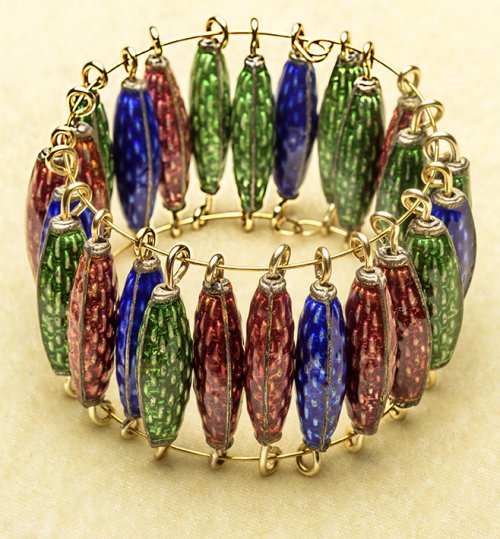
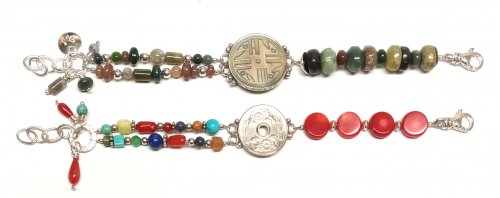
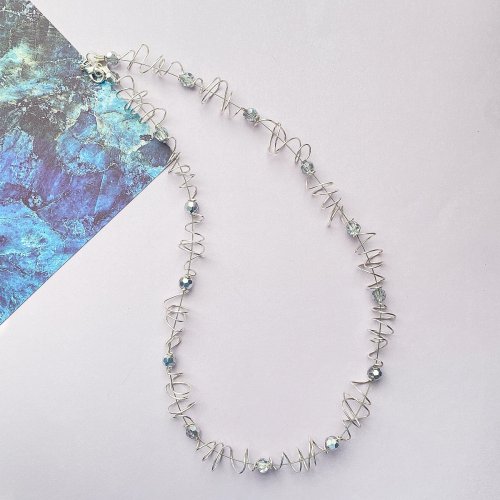


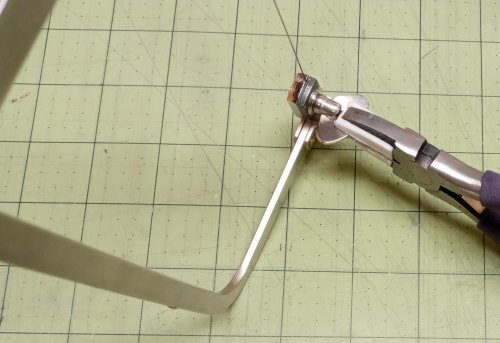

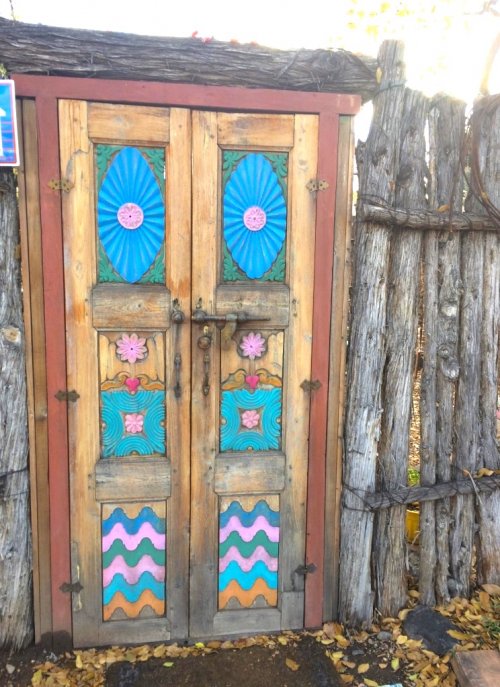
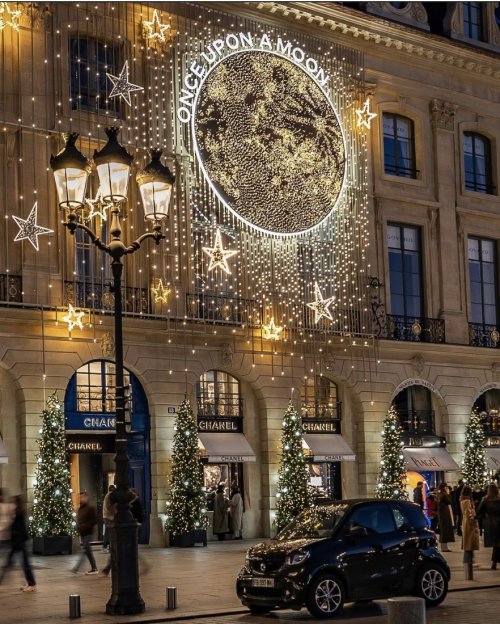


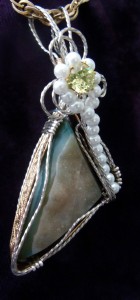

 About Jewelry Chain- About Ball Chain
About Jewelry Chain- About Ball Chain About Jewelry Chain- Snake Chain and Omega Chain
About Jewelry Chain- Snake Chain and Omega Chain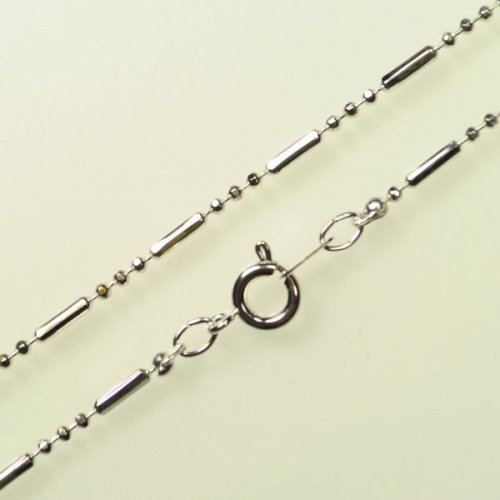 About Jewelry Chain- Bar Chain and Peanut Chain
About Jewelry Chain- Bar Chain and Peanut Chain About Jewelry Chain - Cable Chain and Rolo Chain
About Jewelry Chain - Cable Chain and Rolo Chain About Jewelry Chain- Curb Chain and Gourmette Chain
About Jewelry Chain- Curb Chain and Gourmette Chain About Jewelry Chain- Figaro Chain
About Jewelry Chain- Figaro Chain About Jewelry Chain- Infinity Chain and Anchor Chain
About Jewelry Chain- Infinity Chain and Anchor Chain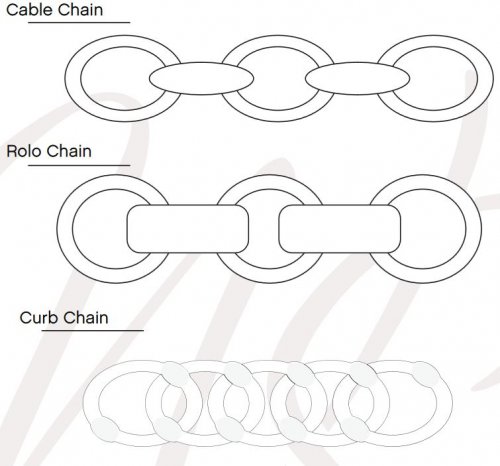 About Jewelry Chain- Chain Reference Sheet
About Jewelry Chain- Chain Reference Sheet About Jewelry Chain- Venetian Chain and Box Chain
About Jewelry Chain- Venetian Chain and Box Chain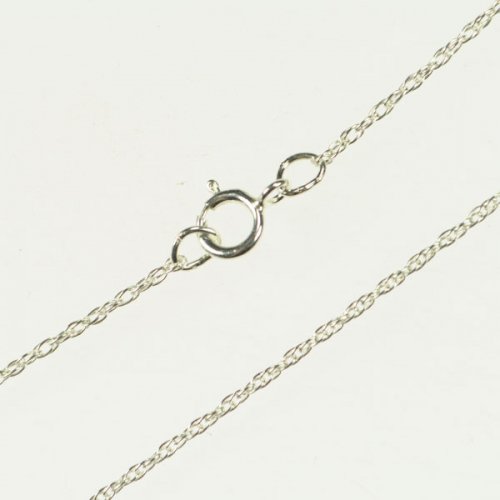 About Jewelry Chain- Wheat Chain and Rope Chain
About Jewelry Chain- Wheat Chain and Rope Chain Introduction to Chain
Introduction to Chain Access More Money by Making Jewelry When Your Prices Are Right
Access More Money by Making Jewelry When Your Prices Are Right An Introduction to Beads and Beading
An Introduction to Beads and Beading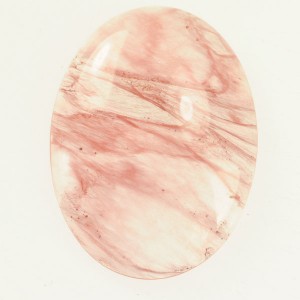 Common Gemstone Misconceptions
Common Gemstone Misconceptions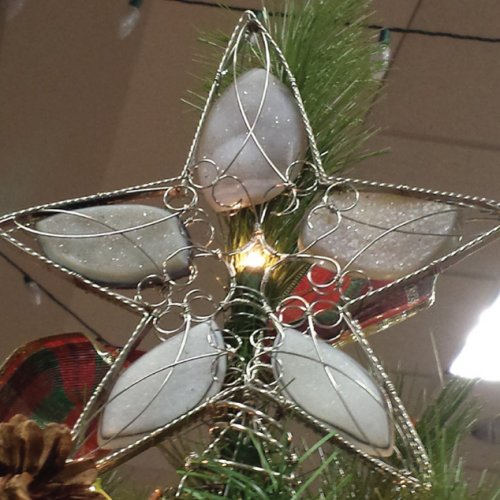 Wire Wrapped Christmas Tree
Wire Wrapped Christmas Tree How To Polish Metal Jewelry using a Rotary Tumbler
How To Polish Metal Jewelry using a Rotary Tumbler How To Polish Your Own Rocks using a Rotary Rock Tumbler
How To Polish Your Own Rocks using a Rotary Rock Tumbler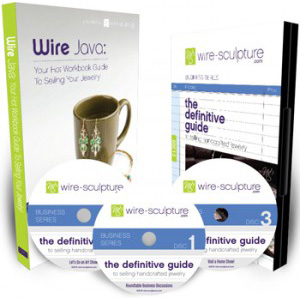 How to Merchandise Your Jewelry on the Internet
How to Merchandise Your Jewelry on the Internet How to Use Twitter as a Wire Jewelry Artist
How to Use Twitter as a Wire Jewelry Artist 20 Ideas to get your Jewelry Biz Busy
20 Ideas to get your Jewelry Biz Busy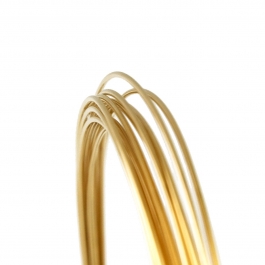 Watching the Precious Metals Market
Watching the Precious Metals Market Jewelry Design Ideas - Get Inspired
Jewelry Design Ideas - Get Inspired Measuring Tools
Measuring Tools July Birthstone - The Ruby
July Birthstone - The Ruby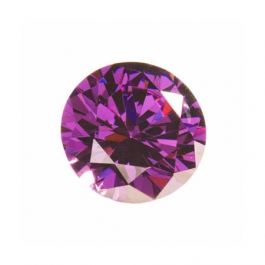 February Birthstone- Amethyst
February Birthstone- Amethyst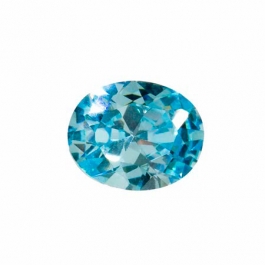 March Birthstone - Aquamarine and Bloodstone
March Birthstone - Aquamarine and Bloodstone September Birthstone - Sapphire
September Birthstone - Sapphire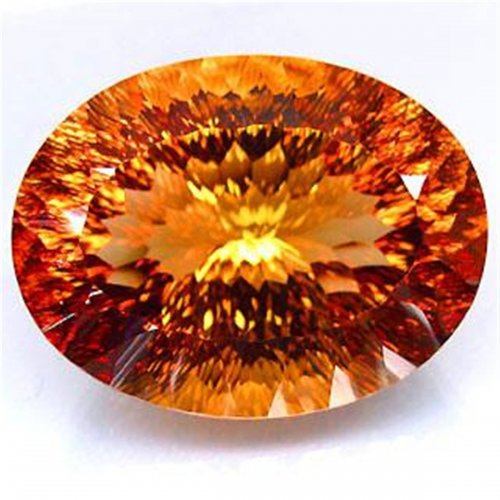 November Birthstones - Topaz and Citrine
November Birthstones - Topaz and Citrine October Birthstones - Rose Zircon, Pink Tourmaline and Opal
October Birthstones - Rose Zircon, Pink Tourmaline and Opal April Birthstone - The Diamond
April Birthstone - The Diamond August Birthstone - Peridot and Sardonyx
August Birthstone - Peridot and Sardonyx June Birthstones - Alexandrite, Pearl and Moonstone
June Birthstones - Alexandrite, Pearl and Moonstone Metalsmithing
Metalsmithing Featured Tool - Mini TruStrike Hammers
Featured Tool - Mini TruStrike Hammers Natural Jasper Stones - Cabochon Gemstones
Natural Jasper Stones - Cabochon Gemstones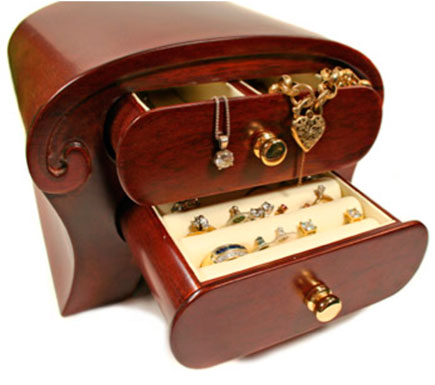 Organize Your Jewelry Box
Organize Your Jewelry Box Pearls- It's a Cultural Thing
Pearls- It's a Cultural Thing Soldering 101
Soldering 101 Starting Your Own Home Jewelry Business
Starting Your Own Home Jewelry Business The Art of Creating Chainmail
The Art of Creating Chainmail Why Should I Be Using Facebook
Why Should I Be Using Facebook Make Handmade Neck Cords on a Dime
Make Handmade Neck Cords on a Dime Tagging Handmade Jewelry Gifts
Tagging Handmade Jewelry Gifts Share Your Expertise with Your Community
Share Your Expertise with Your Community Creating Color Schemes for Jewelry Making
Creating Color Schemes for Jewelry Making Bronze, Brass, Nickel Silver and Copper Base Metals
Bronze, Brass, Nickel Silver and Copper Base Metals Gemstone Treatments
Gemstone Treatments How Wire is Made
How Wire is Made Beading A-B-C's
Beading A-B-C's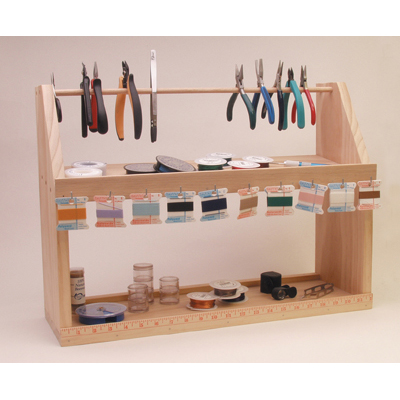 How to Set Up Your Workspace
How to Set Up Your Workspace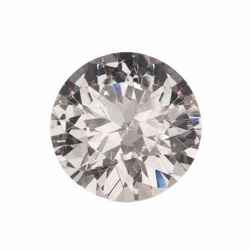 Gem Profile- Diamond
Gem Profile- Diamond Gem Profile- Peridot
Gem Profile- Peridot Gem Profile- Goldstone
Gem Profile- Goldstone Gem Profile- Cryptocrystalline Quartz Introduction
Gem Profile- Cryptocrystalline Quartz Introduction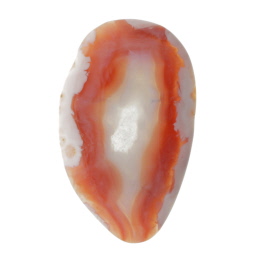 Gem Profile- Banded Agate and Brecciated Agate
Gem Profile- Banded Agate and Brecciated Agate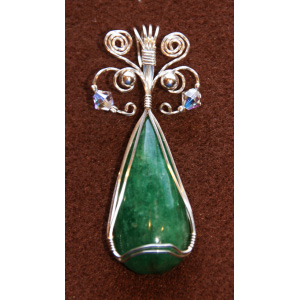 Gem Profile- Emerald
Gem Profile- Emerald Gem Profile- Titanite or Sphene
Gem Profile- Titanite or Sphene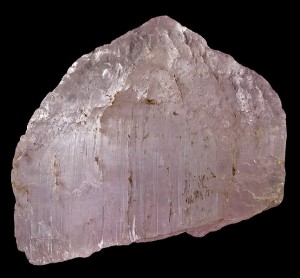 Gem Profile- Morganite
Gem Profile- Morganite Gem Profile- Desert Rose
Gem Profile- Desert Rose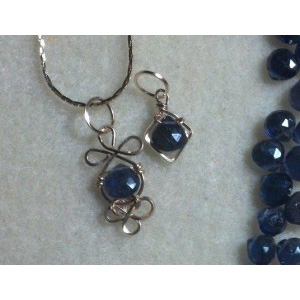 Gem Profile- Iolite
Gem Profile- Iolite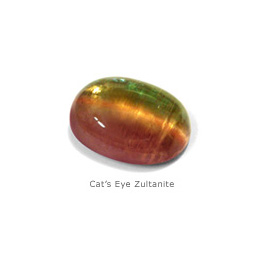 Gem Profile- Zultanite
Gem Profile- Zultanite Gem Profile- Maw Sit Sit
Gem Profile- Maw Sit Sit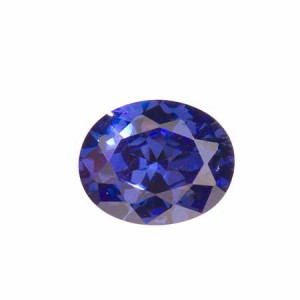 Gem Profile- Tanzanite
Gem Profile- Tanzanite Gem Profile- Aquamarine
Gem Profile- Aquamarine Gem Profile- Turquoise
Gem Profile- Turquoise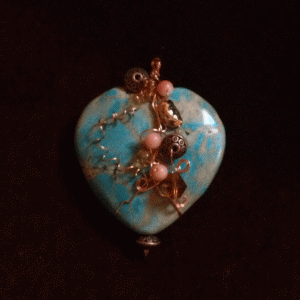 Gem Profile- Turquoise Types
Gem Profile- Turquoise Types Gem Profile- What's Druze
Gem Profile- What's Druze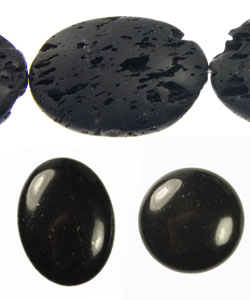 Gem Profile- Basalt
Gem Profile- Basalt Gem Profile- Fordite
Gem Profile- Fordite Gem Profile- Variscite
Gem Profile- Variscite Gem Profile- Pearls
Gem Profile- Pearls Gem Profile- Onyx
Gem Profile- Onyx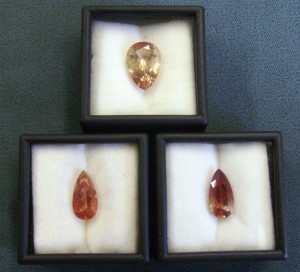 Gem Profile- Sunstone
Gem Profile- Sunstone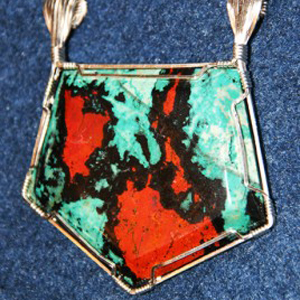 Gem Profile- Sonora Sunrise
Gem Profile- Sonora Sunrise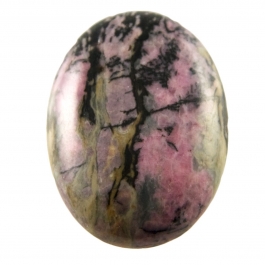 Gem Profile- Rhodonite
Gem Profile- Rhodonite Gem Profile- Glass, Crystal and Quartz
Gem Profile- Glass, Crystal and Quartz Gem Profile- Psilomelane
Gem Profile- Psilomelane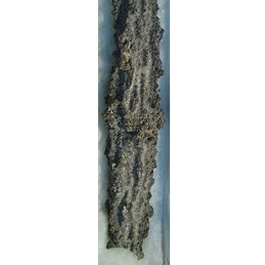 Gem Profile- Fulgurite
Gem Profile- Fulgurite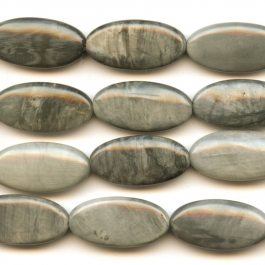 Gem Profile- Cat's Eye
Gem Profile- Cat's Eye Gem Profile- Carnelian
Gem Profile- Carnelian Gem Profile- Petoskey Stones and Indonesian Fossil Coral
Gem Profile- Petoskey Stones and Indonesian Fossil Coral Gem Profile- Rutilated Quartz
Gem Profile- Rutilated Quartz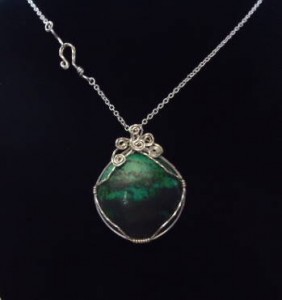 Gem Profile- Chrysocolla
Gem Profile- Chrysocolla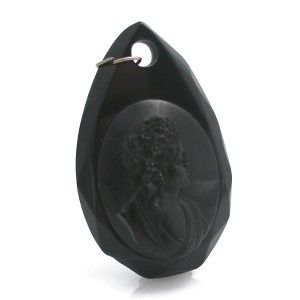 Gem Profile- Jet
Gem Profile- Jet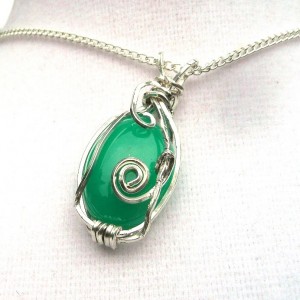 Gem Profile- Chrysoprase
Gem Profile- Chrysoprase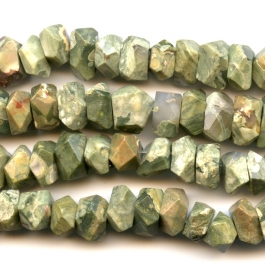 Gem Profile- Rhyolite
Gem Profile- Rhyolite Gem Profile- Chalcedony
Gem Profile- Chalcedony Gem Profile- Lepidolite and Sugilite
Gem Profile- Lepidolite and Sugilite Gem Profile- Unakite
Gem Profile- Unakite Gem Profile- Mother of Pearl
Gem Profile- Mother of Pearl Gem Profile- Moss Agate and Plume Agate
Gem Profile- Moss Agate and Plume Agate Gem Profile- Thundereggs and Mexican Lace Agate
Gem Profile- Thundereggs and Mexican Lace Agate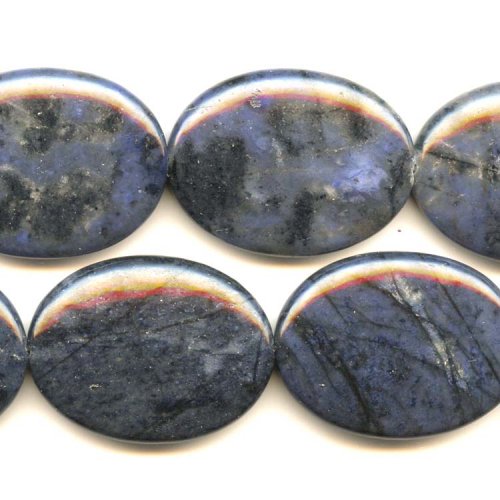 Gem Profile- Dumortierite
Gem Profile- Dumortierite Gem Profile- Apatite
Gem Profile- Apatite Gem Profile- Blue Topaz
Gem Profile- Blue Topaz Gem Profile- Aragonite
Gem Profile- Aragonite Gem Profile- Zircon and Cubic Zirconia
Gem Profile- Zircon and Cubic Zirconia Gem Profile- Topaz
Gem Profile- Topaz Gem Profile- Howlite
Gem Profile- Howlite Gem Profile- Sodalite
Gem Profile- Sodalite Gem Profile- Magnesite
Gem Profile- Magnesite Gem Profile- Cuprite
Gem Profile- Cuprite Gem Profile- Nuummite
Gem Profile- Nuummite Gem Profile- Bronzite
Gem Profile- Bronzite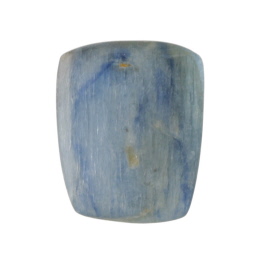 Gem Profile- Kyanite
Gem Profile- Kyanite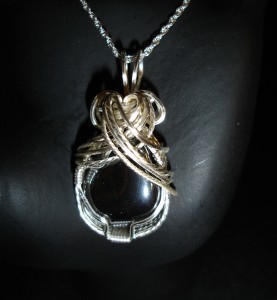 Gem Profile- Hematite
Gem Profile- Hematite Gem Profile- Derbyshire Blue John
Gem Profile- Derbyshire Blue John Gem Profile- Eilat Stone
Gem Profile- Eilat Stone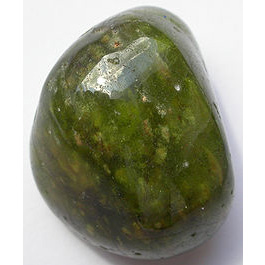 Gem Profile- Vesuvianite
Gem Profile- Vesuvianite Gem Profile- Strontium Titanate -Fabulite
Gem Profile- Strontium Titanate -Fabulite Gem Profile- Tourmaline
Gem Profile- Tourmaline Gem Profile- Larimar
Gem Profile- Larimar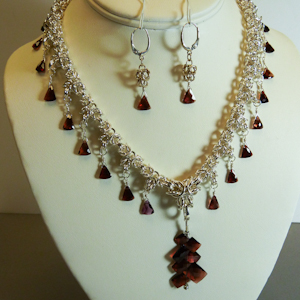 Gem Profile- Garnet
Gem Profile- Garnet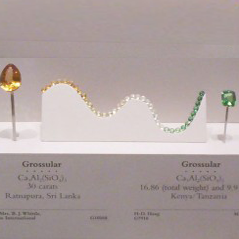 Gem Profile- Tsavorite and Green Garnets
Gem Profile- Tsavorite and Green Garnets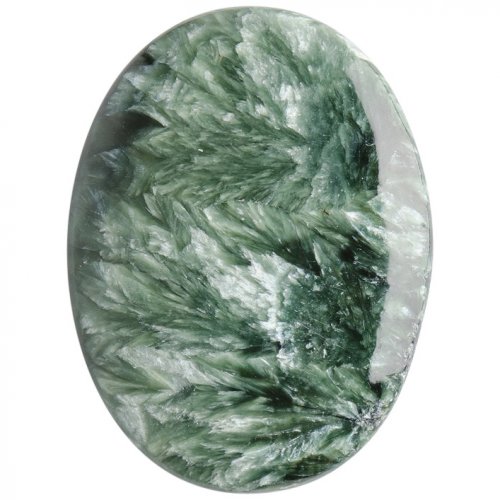 Gem Profile- Seraphinite
Gem Profile- Seraphinite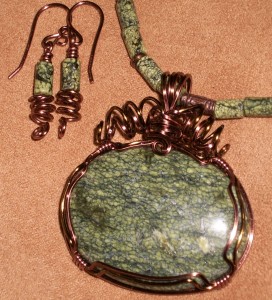 Gem Profile- Serpentine
Gem Profile- Serpentine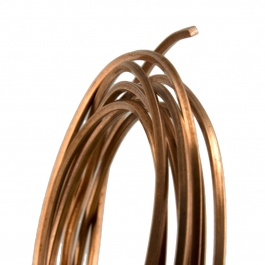 American Wire Gauge
American Wire Gauge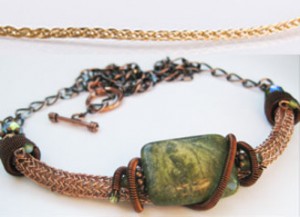 Viking Knit and Spool Knit Chain
Viking Knit and Spool Knit Chain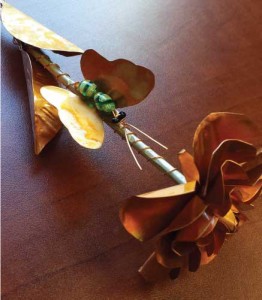 Copper Roses
Copper Roses How to Make Medical ID Bracelets Special
How to Make Medical ID Bracelets Special Remembering the Fallen
Remembering the Fallen 6 Ways to Find Your Uniqueness in Jewelry
6 Ways to Find Your Uniqueness in Jewelry Gem Profile- Moissanite
Gem Profile- Moissanite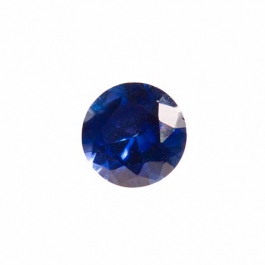 Birthstone Swarovski Colors
Birthstone Swarovski Colors Gem profile- Paua and Abalone
Gem profile- Paua and Abalone Tips for Tucson Shopping- Gem Show Secrets
Tips for Tucson Shopping- Gem Show Secrets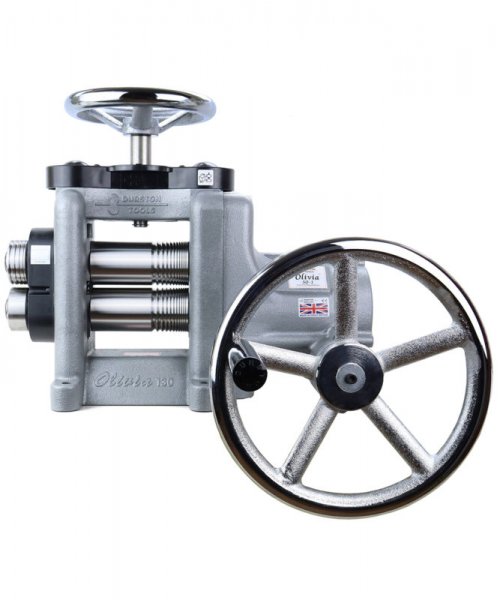 Durston Olivia Rolling Mills
Durston Olivia Rolling Mills How to Use a Jewelry Bench Polisher Effectively
How to Use a Jewelry Bench Polisher Effectively 
